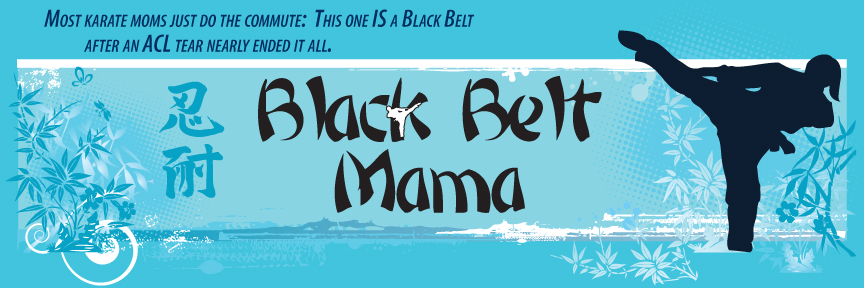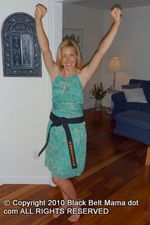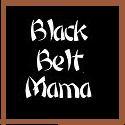March 23, 2009
There Are No Stances in Kobudo
By: C. Bruce Heilman, Hanshi, Okinawa Kenpo Karate Kobudo
Although "kobudo" is commonly referred to as an "extension of ones open hand karate", the reality is that kobudo is only an extension of the open hand concepts and not the actual stancing and techniques.
I can still remember the day when I first heard my Instructor make the statement that …"there are no stances in kobudo.” My Instructor was none other than Seikichi Odo, the head of the Okinawa Kenpo Karate Kobudo system and considered one of the top kobudo practitioners on Okinawa. At the time, being a die-hard traditionalist brought up on the value of strong basics, etc. I at first considered that I had a "hearing problem" and that I had just misunderstood my Instructor’s statement, as English was not his first language and Japanese was not mine. However, as time went on I began to understand that I had indeed heard him correctly and that my earlier perception that …"kobudo was just an extension of ones karate,” was off the mark.
With the passage of many years, I now have come to fully understand and accept this concept, and I have to admit some enjoyment when I now find myself making that very statement at various kobudo seminars I give internationally, and see the same look of astonishment and initial disbelief in the eyes of some of the seminar participants. It’s the same look I must have had so many years ago. It makes me wonder if that "smile" I thought I saw on my Instructor’s face so long ago when he first introduced me to the "statement" has any relationship to the one that I'm accused of having occasionally used when I now discuss the same topic.
Let us begin the detailed examination of this statement by first looking briefly at the historical development of Okinawan Kobudo.
Kobudo's Historical Development:
The study of ancient martial arts weapons and their related techniques has, over the centuries, resulted in the development of a variety of schools and systems. These systems can be divided into two basic groups purely for combative purposes: 1) Bugei – martial arts, and 2) Budo – martial arts. The Budo form was developed from the Bugei and Jitsu forms. The Okinawans call these forms "Kobudo" or ancient weapons arts.
Around 400 years ago, Japan began to assert control over the Island of Okinawa. One of the edicts forced the Okinawan people to turn over their weapons to the Japanese. The move was made by Imperial Japanese leaders with almost no realistic political foresight and very little insight into the Okinawan way of thinking. The ruling classes assumed that to gain political and financial control over this tenacious island race, all that was necessary was to disarm the people. Little did the authorities realize that the Okinawan people were such a nationalistic race and so strongly devoted to freedom that they would go to any lengths to deceive and/or hide the weapons they needed to fight their oppressors. Thus the weapons were called "farm implements,” but underground the fighting population was training in the use and proficiency of these tools. Soon the weapons masters became a most feared force in the battle for political freedom, feared by the Japanese and idolized by the Okinawan people whose protectorate they were.
Today, much of the Island of Okinawa has undergone its own industrial revolution, and most of these crude farm implements have been replaced by mechanical and/ or power tools. Yet, the history of these weapons is still part of the rich traditional background of Okinawan Martial Arts, and as important as the physical aspects of the arts.
Kobudo practitioners today, as did their ancient predecessors, perfect weapons techniques by training with kata specifically designed to teach and perfect directional movements, transitional movements, body alignment, balance, grace and coordination between body and weapon.
Further we must recognize that the practice of Okinawan Kobudo, although not formally part of Karate, is almost inseparable from an historical viewpoint. Okinawan Karate practitioners are generally involved to some extent in the practice of Kobudo. While most are at least proficient with a few weapons, few if any can use a wide range of weapons with a high level of proficiency.
The major difference between Karate and Kobudo practice has been that historically, Kobudo practice has not been as systematized as with Karate. Kobudo practice has tended to be focused upon separate "Kobudo Associations.” The very existence of these Kobudo Associations has however, over time, started a trend towards systematization of the Kobudo training, techniques and katas generally around "lineage lines" rather than "karate styles."
Thus, it is clear to see that historically, Okinawan Kobudo has been more organized around "lineage lines" with the practitioners of a particular kobudo lineage coming from a variety of karate styles. Examples of such "lineage lines" include: Taira, Matayoshi, Odo, Motoburyu, Chinen (Yamani-ryu), Kuniyoshi (Honshin-ryu), Uhuchiku, etc. Kobudo Lineages.
However, it is also recognized that some of the kobudo lineage lines have been strongly influenced by the stylistic preferences of its practitioners. The key here is that karate stylistic preferences have only influenced – not dominated the kobudo practice. Therefore, I submit that the conceptual aspects of kobudo practice are more important than the various karate stylistic technical considerations – i.e.: kobudo is kobudo when we come down to the basic concepts – it either works or it does not.
The Role Of Stances:
Since the preference for/and technical execution of stances differ between the various karate styles, -from long Zen Kutsu Dachi's, to moderate length Seisan Dachi's, to short range Sanchin Dachi's – we must therefore look at what the underlying purpose is for a stance.
The underlying purpose of all stancing is very simply – to provide a stable platform for the body – balance. The differences we see in length preferences are not important – it is just the stylistic preference. The balance the various different stances provide, permit the practitioner to exercise "control over the centerline."
In Karate, this "control of centerline" is accomplished by placing the hands "on-guard" positions between ourselves and our opponents. Without a strong balanced foundation, the guard positions would be ineffective. It can also be seen that one may need to make slight adjustments to the "guard" positions depending upon the type of stance being used (long vs. short) in order for the karate-ka to keep correct and effective control of the centerline. This concept is not a stylistic one – it is just good karate.
In Kobudo, the same basic concept of "control of centerline" also exists. The only change here is that this "control" is affected by the “weapon" rather than our hands as in karate. In fact this viewpoint, I believe has given rise to the initial misconception that most karate practitioners have that "weapons are just an extension of one's karate techniques." The key here is that we must also look at some of the other key concepts that must be considered in kobudo practice.
Other Key Concepts:
Among the other key co
nsiderations that are important in kobudo practice are: removal of target, natural relaxed movement, angle attacks, and range of weapon considerations.
The meaning of "removal of target" becomes clear to anyone who has fought with weapons. It is just good common sense to present the minimum target to an opponent and when attacked to be able to remove the target from the path of the opponents attack. In this manner we get away from the "Little John and Robin Hood" picture of two people pounding away on each other with their staffs, to one of being able to "slip the attack" and counter-attack.
In order to be able to remove the target, we have to learn how to "move in a natural relaxed manner" – flow followed by focus. The techniques with the weapon should be more related to wiping techniques than to clubbing or power techniques.
The concept of "angle attack" is also very critical and it goes hand in hand with the consideration of the effective "range of a weapon". We can classify the various different weapons of Okinawan Kobudo into one of three groups: 1) Long Range (nunte bo, yari bo, bo, etc.), 2) Intermediate Range (sai, tunfa, kama, nunchaku, nunte sai, etc.), and 3) Short Range (tekkos, etc.). Obviously, when one has an intermediate or short range weapon and is faced with an opponent with a long range weapon, if you stay at full range you can only at best be able to defend. For you to counterattack you must get in on the opponent, and an angle attack is the best means to accomplish this task.
Next, I draw your attention to an overview of the kata of traditional Okinawan Kobudo. Here we see that the most dominant type of attack presented in the traditional katas (of all the lineages) is the "lunge punch position" – lead hand and foot, same side forward. This is not just a fluke – but it is critical when one considers the issues of removal of target, range of weapon, and angle attack.
Modification of Stancing:
So as a practitioner of Okinawan Kobudo, the important point is not from which karate style you derive from, but rather that you understand that in order to make the kobudo work one needs to understand and be able to execute the concepts discussed above to get the most out of your kobudo practice.
Now we come back full circle to the initial statement of this article, that … "there are no stances in kobudo." The statement does not mean that no stances exist, as we have already discussed the important role of stancing in providing the foundation for balance and movement. But rather what is meant is that the "standard karate stances" are not employed in Okinawan Kobudo. The stancing concept is employed but the actual technical aspects of the stances must be modified. Remember, in open hand, we adjust the hands to effect the same "on-guard" positions out of different karate stances. In kobudo, since the distance between the "guarding portion of the weapon" and the body is larger than in karate, the adjustment is made in the stancing to permit effective centerline control.
The amount of adjustment to the stancing depends upon the length of the weapon. In using a short range weapon such as the Tekkos (claws), the range of adjustment is minor as the weapon is closer to the body. With the long range weapons such as the bo, the adjustment to the stance becomes more significant. In all cases, the end result is the same – effective control of centerline from a natural position – i.e.: just good kobudo that works.
The first area of adjustment for all forward facing kobudo stances is an increased emphasis of the use of the "pigeon toed" position for the front foot. The turning in of the front foot and flexing the front knee to where it is over the big toe of the support foot not only provides a level of protection for the inside of the leg (against attack), but also removes the front leg from the trajectory of the weapon during blocking or attacking techniques. This latter issue is an important consideration as the closer the "swing" of our weapons comes to a straight line to the target the more power we can deliver. Additionally, this type of front foot position provides an excellent basis for pivoting the rest of the body when removing the target.
The second area of stance adjustment focuses on the width of the stance and the opening of the hip position. A normal karate forward stance (Seisan or Zen Kutsu Dachi) uses shoulder width as the guide for the correct width. In kobudo practice the width is adjusted to less than shoulder width with the hips in a more open position. Thus the typical midrange and long range forward stances tend to be narrower and longer than their karate counterparts. It is through these adjustments that the Kobudo-ka is able to maintain control of centerline and minimization of target in a natural relaxed manner.
With respect to the use of the Neko Ashi Dachi (Cat Stance) in kobudo practice, here we also see the need for stance adjustments. Use of the standard karate Cat Stance presents too large of a target and does not permit effective control of centerline. The adjustment here is to shift the rear (support) foot into a position pointing 90 degrees from the opponent and open the hips to point in the same direction. This position is sometimes refereed to as the "Okinawan Back Stance" in some styles of Okinawa Karate. This position permits the practitioner to basically "hide behind" the weapon and makes covering centerline and clearing the defensive zones an easy task.
If one does not make adjustments to their stancing, then you are faced with the situation I refer to as "winning the battle, losing the war". By this I mean, since by using a standard karate stance in kobudo you will be presenting a larger target to your opponent and at the same time have a harder time maintaining control of centerline. When an attack comes you will have to clear a larger defensive area with your block and as a result leave a greater opening for a follow-up attack – thus the situation of getting your first block off but finding yourself hit with the follow-up attack – winning the battle/losing the war!
So in conclusion, while stances do exist in Okinawan Kobudo, they are not the same as those employed in our open hand arts. The concepts are the same, but the technical execution changes. Thus, perhaps a better description of "kobudo" might be to say it is …"an extension of basic karate concepts rather than basic karate techniques."
To read Hanshi's article "An Overview of Okinawan Kobudo" from last year's Admired Martial Artists Month, please click here. To read more about Hanshi Heilman, please go here.
To be entered to win one of the giveaway prizes, please leave a comment. The more comments you leave, the more chances you have to win! Post the Admired Martial Artists button linking back here and you get an extra three entries to win! Just shoot me an email with the url where you've displayed the badge! You can find the html and badge here.
And finally, this is clearly fantastic stuff. Why not subscribe?
























Wow.
That was really helpful, but I’ve got to read t a few more times to process it and really be able to think about it – but you’re right, the thought of ‘there are no stances in kobudo’ is a bit of an odd one.
But thanks! You have a way of writing/explaining things that really works.
That was an *awesome* post. I’ve been interested in looking into Okinawan kobudo for a while now, and this post has really inspired me to actually do something about it. Thanks for sharing your thoughts!